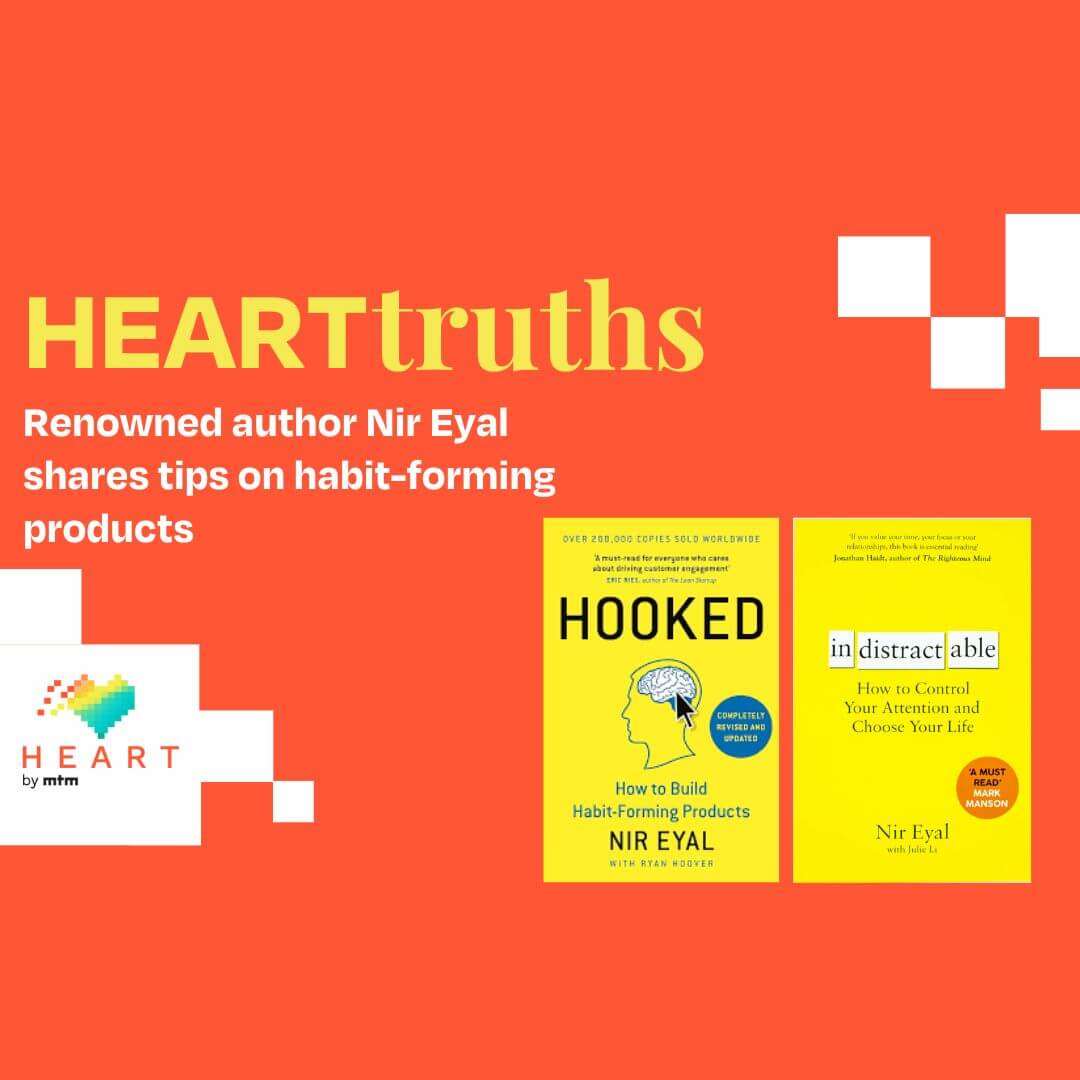Our very own Jonathan Stone spoke with Nir Eyal, author of Hooked and Indistractible, and behavioural design expert, about MTM’s HEART framework for healthy acquisition and retention. In this edition of HEARTtruths, Jonathan and Nir discuss how crucial building habits are to long-term customer value (CLTV).
The Foundations of Habit Formation
Think of habits as seeds that grow when nurtured correctly. Nir emphasises the importance of recognising internal triggers—the psychological cues that prompt user behaviours. Understanding these triggers can significantly improve a brand’s ability to establish new or modify existing user habits.
Understanding Internal Triggers
Internal triggers are like the itch users need to scratch. Nir discusses “the itch,” often an internal trigger such as boredom, stress, or insecurity. By recognising these triggers, brands can develop products that offer constructive solutions rather than unproductive distractions. Nir suggests focusing on the most frequent triggers to create effective, long-lasting user habits.
Aligning with Emotional Needs
Nir also underscores the importance of aligning products with users’ emotional needs. He explains how emotions drive many actions. For instance, if stress is an internal trigger, a habit-forming product might incorporate mindfulness features or exercise prompts, offering beneficial alternatives to unhealthy coping mechanisms. Timing is key—design product features to engage users when internal triggers are most likely to occur, ensuring positive habits gradually replace less desirable behaviours.
Leveraging External Triggers
External triggers are like friendly nudges from the environment. These cues remind users to perform certain actions. Nir explains that while internal triggers help brands understand the reasons behind user habits, external triggers serve as practical reminders. Integrate these triggers into the product—use notifications, alerts, or visual cues to reinforce new behaviours until they become automatic.
Conclusion
Building habit-forming products involves understanding both internal and external triggers. By addressing users’ emotional needs and using external cues strategically, brands can develop lasting habits that enhance user engagement and satisfaction.
The HEART framework provides valuable guidance for any brand looking to improve its habit-forming product design. Want to learn more? Reach out!
Watch the full interview with Nir here:
